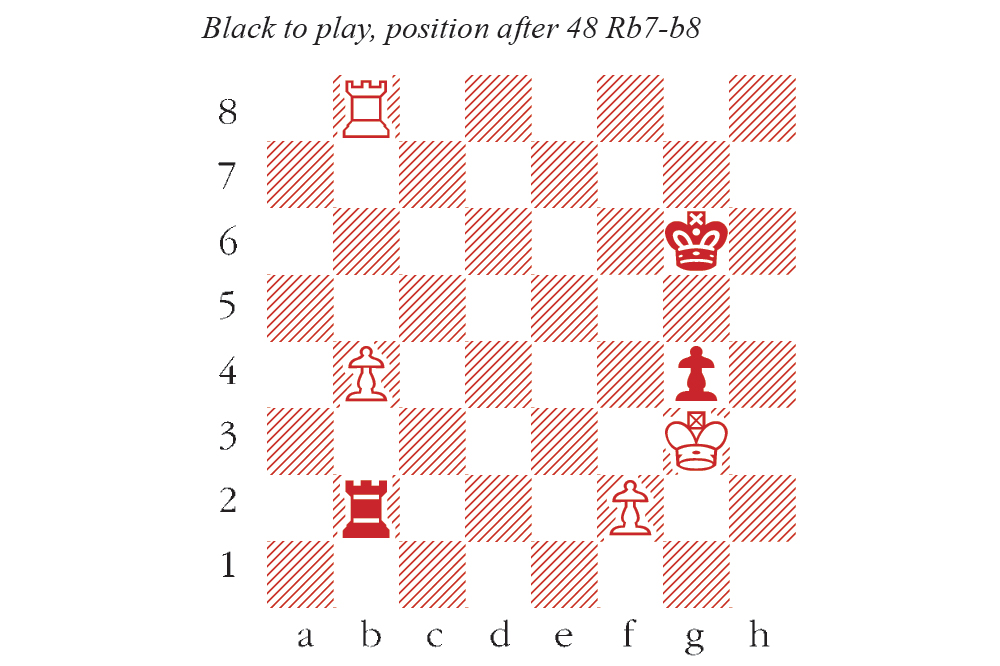A queen and king can force mate against a lone king – that is as fundamental as it gets. Almost all regular players know that to be true, and they also know how to execute it. But players are regularly confronted by the distinction between ‘knowing that’, and ‘knowing how’.
Many know that king, bishop and knight can force mate against a lone king. But I would bet with confidence that only a minority of those who know that fact could actually demonstrate it. The technique is somewhat abstruse and, since the endgame arises so rarely, it is easily forgotten.
Imagine – you spent an hour practising this endgame… but that was five years ago. Now you’ve actually got it on the board, but it is, so to speak, a cold, rainy night in Stoke. After several hours of play, only a few minutes are left, and hunger, fatigue and the call of nature are all jostling for attention. In such circumstances, even masters who ‘knew’ what they were doing, have been known to fluff it.
A recent online game between Ian Nepomniachtchi and Magnus Carlsen reached the tricky endgame of king and queen against king and rook. Both players certainly knew that the king and queen should triumph with perfect play. And so they usually do, but owing more to the defender’s mistakes than the attacker’s know-how. A stubborn defence from the king and rook requires considerable skill to break down, and even Nepomniachtchi was unequal to the task.
One endgame caught my eye from the World Senior Team Championships, held in Ohrid, Macedonia last month. In the 50+ section, USA were top seeds, with a team of emigrants from the former USSR. ‘England 1’ were seeded just behind them, and their match against the USA team turned on the following game. (USA won this game, and went on to get gold in the 50+ section, ahead of England, who got silver.)
England’s grandmaster John Emms was under pressure from an early stage, but steered the game into a rook endgame with a single pawn deficit, which I’m sure he knew was tenable. Emms once wrote a well-regarded book called The Survival Guide to Rook Endings, so he knew what to aim for, as well as the pitfalls to avoid. He defended impeccably for almost 30 moves, making several precise moves, and in the diagram position the draw was within reach.
Gregory Kaidanov-John Emms
World Senior Team Championship, 50+, 2023
Here, 48…Kf5 would be a mistake, allowing 49 Rf8+ Ke5 50 Rf4! and the g-pawn drops off 48…Kf7 was correct, because 49 Kxg4 Rxf2 50 b5 Ke6 is a straightforward draw. 49 b5 Kg6 50 Rg8+ Kf6 51 Rb8 Kg6 Kaidanov’s back and forth with the rook is a standard ploy to wear down the defender. Now 52 Kxg4 Rxf2 53 b6 Rb2 54 b7 Kg7! secures a draw. When White’s king comes to support the pawn, it cannot shelter from rook checks. 52 b6 Kg7 This time, it’s different. Black must defend g4 with 52…Rb4!, and then 53 b7 Kg7! draws (not 53…Kf7 54 Rh8! Rxb7 55 Rh7+) 53 Kxg4 Rxf2 54 Kg5 This time, Black is lost, for a subtle reason which manifests itself a few moves down the line. Rb2 55 Rb7+ Kf8 56 Kf6 Ke8 57 Ke6 Re2+ Black would like to play 57…Kd8 58.Kd6 Kc8, which draws, but sadly 58 Rb8 is mate! 58 Kd6 Rd2+ 59 Kc7 For a player of Kaidanov’s level, the rest really is a formality. Rc2+ 60 Kb8 Rb2 61 Kc8 Rb1 62 Rb8 Ke7 63 Kb7 Kd7 64 Rh8 Rb2 65 Rh1 Ra2 66 Rd1+ Ke7 67 Kb8 Rb2 68 b7 Ra2 69 Rd4 Ke6 70 Kc7 Rc2+ 71 Kb6 Rb2+ 72 Kc6 Rb1 73 Re4+ Black resigns






Comments